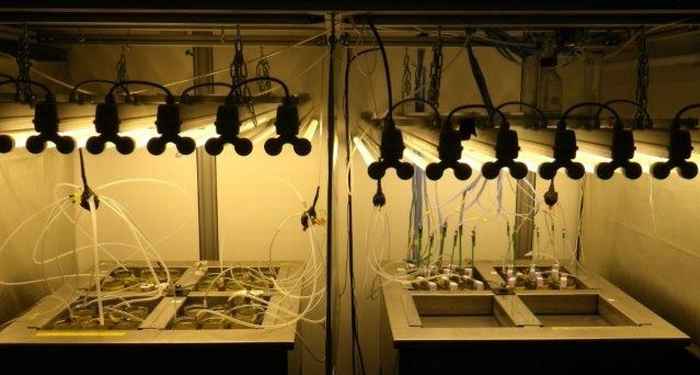Facilities

Cell counting
For phytoplankton and bacterial cell counts our research group makes use of an BD Accuri C6 Flow Cytometer (BD Accuri cytometers, Belgium) equipped with a blue and a red laser, as well as two CASY-counters (Schärfe System, Germany) equipped with a 45µm and 60µm capillary.
Membrane Inlet Mass Spectrometry (MIMS)
In our laboratory we have a Hiden HPR-40 Membrane Inlet Mass spectrometer installed with a mass range of 200 amu (atomic mass unit) with a dissolved species probe. This allows for accurate measurements of a wide range of gasses either in gaseous or dissolved in liquid environments. Using stable isotopes specific changes in conditions applied can be quantified. The probe is positioned in a specialised cuvette. Typical applications of the MIMS in our lab are 13C-labeled bicarbonate or carbondioxide experiments to quantify rates of carbon fixation in cyanobacteria and algae.
For more information, see our facilities page.
Chemostats
Our research group makes use of different chemostat systems, i.e., chemostats that are specifically designed for phototrophic organisms and chemostats that are designed for growth of chemotrophic bacteria. These chemostats enable dedicated experiments with full control of temperature, mineral nutrition, gas composition and light conditions.
See more on our aquatic growth facilities page.
Culture collection
Our research group has a large culture collection of freshwater and marine cyanobacteria. Most of these are for our own use in research and education. We do not have a service lab that can respond to requests from elsewhere.
Molecular genetic labs
Our research group has access to the IBED Molecular Genetic Laboratory for molecular biological experiments
Fieldwork facilities
FAME has access to numerous fieldwork facilities, including the ship R.V. Dreissena for fieldwork programs on lake Markermeer.
CARMABI Research Station
The department of FAME works closely with the CARMABI Research Station, in Curacao.
Go to their website to see which research facilities are available.